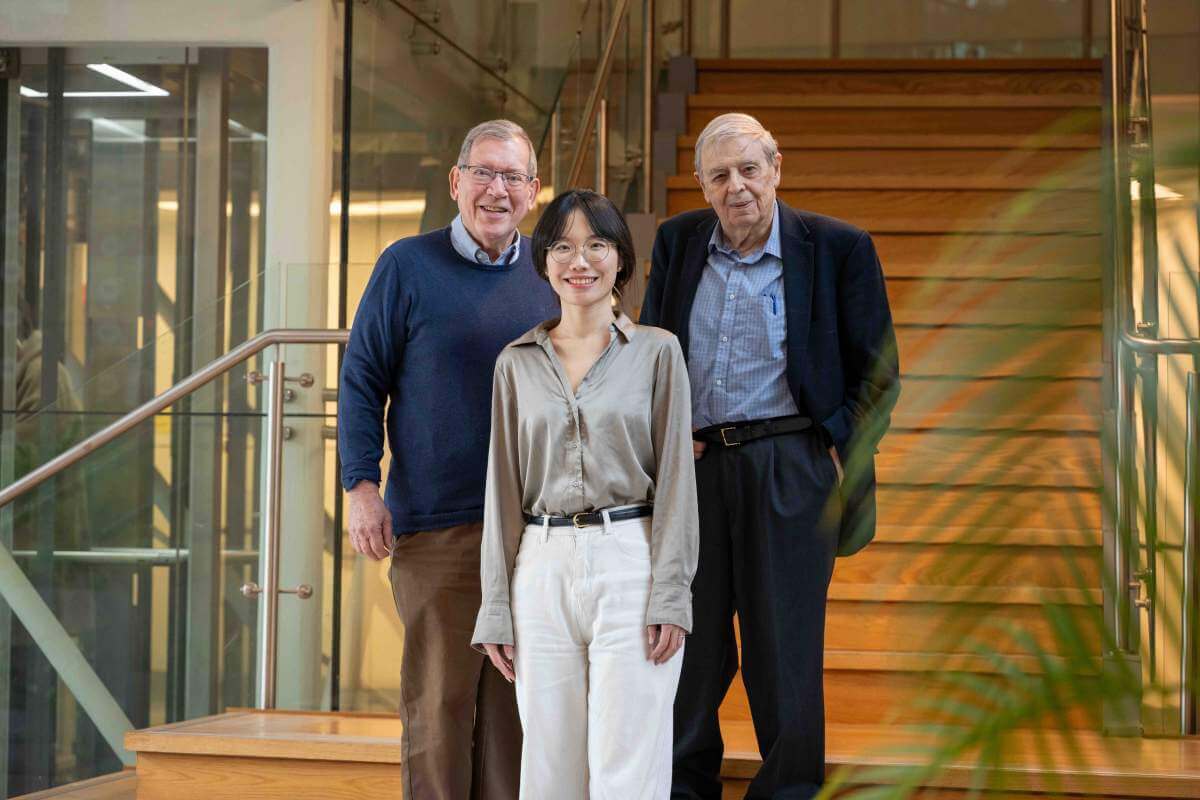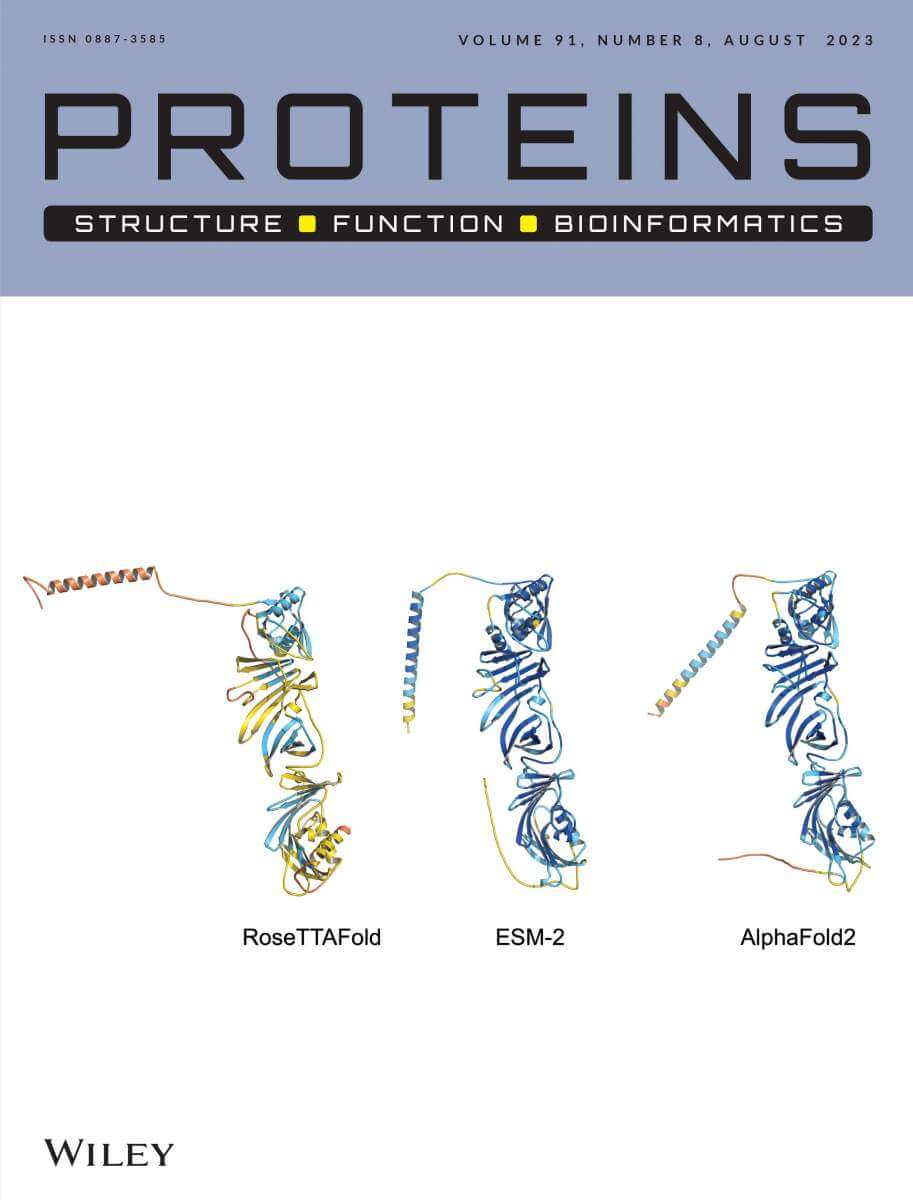Collaboration between Israeli researchers, Chinese students and artificial intelligence reveals new wrinkles between the folds of orphan proteins and updates chapters in the theory of evolution

when Prof. Yoel Sussman And Prof. Israel Silman accepted the request to guide Chinese students at Zoom during the Corona epidemic, they did not imagine that this experience would lead to innovative research that might change what we know about the formation of new proteins.
"At first I was skeptical - they were undergraduate students, and I didn't put much hope in communicating through a computer screen," recalls Prof. Sussman. And yet he and Prof. Silman - a pair of professors at the Weizmann Institute of Science who have hundreds of joint studies on the structure and function of proteins - took it upon themselves to guide four students from leading Chinese universities. The directive was implemented as part of the "Yutchon-Weizmann" program to promote academic cooperation between Chinese and Israeli scientists
Already at the first meeting, the Israeli professors asked the Chinese students to address them by their first name, something unheard of in Chinese universities, and encouraged them to develop critical thinking. They did not expect the implementation to be so quick: when they asked the students to summarize their old paper, they received back a thorough critique of their findings from a contemporary perspective, and an offer to reexamine some of the conclusions using new methods.
Jing Liu, one of the students, says that it was an academic experience completely different from anything she knows. "In China, a master's student cannot challenge even a doctoral student or a post-doctoral student - they may get angry or tell the head of the group," she explains. However, she notes that at the Chinese branch of the Israel Technion in the Guangdong province where she studied at the time, the atmosphere was different. "I had a supervisor who was willing to listen to me and lead a discussion - this is something that is not easy to find in universities in China."
To the surprise of both parties, the Zoom meetings quickly turned from one-way lectures into an open and mutual dialogue. One of the topics that the participants dealt with was a Czech study from 2017 that Liu brought up for discussion. The research findings indicated unexpected turns in the evolution of proteins - and in fact led to a surprising turn in the acquaintance between the Israeli researchers and the Chinese students.
The folding and the dogma
According to the accepted evolutionary theory, life on Earth evolved from single-celled creatures to more complex creatures due to random changes in the DNA of these creatures. According to the principle of natural selection, the changes in DNA, as beneficial as they were, were preserved and passed on to more developed creatures. Therefore, most of the protein-coding genes in our bodies have equivalent versions in many other species along the evolutionary tree, all the way back to yeast or bacteria.
Given that natural selection has been leaving its mark on life on Earth for billions of years, it could be expected that any genetic sequence that encodes a recipe for a valuable protein has already been created, preserved and passed on. In fact, until recently, the scientific explanation was that all the proteins that exist in our world are created by refining the recipe of existing proteins, and that completely new proteins stopped appearing in our world a long time ago.
The Czech study that so fascinated Liu and her supervisors cracked another fissure in the scientific paradigm. At the center of the research was the ability of many proteins to fold into complex structures. It is this ability that has developed throughout evolution that allows proteins to take on dedicated roles and become sophisticated biological machines. The Czech researchers created about a hundred new protein sequences by randomly rearranging their building blocks - like shuffling a deck of cards. When they created these proteins in the lab that had never been born before, a third of them appeared to fold into tight structures, similar to natural proteins. "It was absolutely amazing," says Prof. Sussman. "If someone had asked me before, could a random sequence of protein fold in this way, I would have said 'no way'".
Even though not all proteins fold, the main life activities are carried out by properly folded proteins, Prof. Silman emphasizes. Therefore, the amazing finding of the Czech research that proteins that were "never born" can fold, indicates that new proteins can not only be created even today but can even take on new essential roles.
Orphans were born
But how does a non-protein-coding DNA segment suddenly become a new recipe for a protein? How does the new protein fold and become active? How long does it take for these processes to take place? And is it possible to take advantage of the new knowledge gained in protein engineering?
To begin to deal with these questions, Prof. Sussman and Prof. Silman decided to carry out one of the pioneering structural studies of new proteins. They conducted the study together with Liu, the first author of the scientific paper, and Rongqing Yuan, then a student at Qinghua University in Beijing. The four of them met on Zoom for a year and a half until they completed the research and finished writing the article, which Recently published in the scientific journal Proteins: Structure, Function, and Bioinformatics. The article is also signed by the two students who participated in the original meetings, Wei Shao and Jitong Wang.
The scientists tested the folding potential of new proteins using artificial intelligence algorithms. In recent years, these tools have revolutionized the study of the structure of proteins, as they are able to predict in most cases the three-dimensional structure of a particular protein based on its amino acid sequence. This computational ability saved many arduous laboratory hours and reduced the dependence on crystallography - the necessity to turn the proteins into crystals as a step on the way to deciphering their structure.

But the new tools are accurate in their prediction when a certain protein has many equivalents in different species, whereas new proteins, by their very definition, do not meet this criterion; They exist in only one species or at most in a small number of related species. In fact, because they have no evolutionary "parents", they are sometimes called "orphan" proteins. Despite the difficulty, the scientists were able to successfully run the algorithms on orphan proteins as well. They did this, among other things, by using three different algorithms at the same time - AlphaFold2, RoseTTAFold, ESMFold - and comparing the results.
In the first step, they ran the three algorithms to predict the 3D structure of the "never born" proteins from the Czech study. The artificial intelligence was able to predict the research findings: it predicted which proteins would fold and which would not. In the next step, the researchers ran the algorithms on orphan proteins that were created out of nothing in nature - proteins of which only a handful had previously been characterized in experiments. After a careful search of the scientific literature, the scientists found seven orphan proteins whose function was known, but whose structure had not yet been deciphered.
The name "Yutchun" (雨春) means "rain" (雨) "in the spring" (春) - and it symbolizes the cultivation of the next generation in science and technology
The algorithms determined that although two of the seven lack a defined shape, five of them are well folded. One of the five led to a miraculous unanimity between the three algorithms as far as its structure is concerned - a fact that indicates a high probability of accuracy in the forecast.
In addition, the scientists searched a protein database and found three orphan proteins whose crystal structure was deciphered using crystallography. Amazingly, two of these proteins displayed folds that had never been seen before. Since the structure of the protein determines its function, the new folds imply that orphan proteins may perform new biological functions that may be exploited in the future for the benefit of mankind in a variety of applications, from breaking down plastics and producing green energy to treating diseases.
Prof. Sussman says: "Our research changes the perception of how evolution works. Usually it progresses as Darwin described, but occasionally new proteins may appear 'out of nowhere'. In other words, new features may appear suddenly, and not develop over millions of years." Prof. Silman adds that the findings of the new study, along with other studies on proteins created from nothing, change the thinking about the origin of life in general, and the origin of man in particular: "Apparently we are not exactly the great-great-great-grandchildren of inaudible".
Prof. Sussman concludes: "We hope that our research will encourage other scientists to focus on orphan proteins. Each new structure of a protein opens up fascinating research horizons."
Following the meeting with the researchers from the Weizmann Institute, Liu is now studying for a master's degree in the laboratory of Prof. Naama Barkai in the department of molecular genetics at the institute. Yuan is also studying outside of China - at the University of Texas Southwestern Medical Center in Dallas. The "Yutchon-Weizmann" program that connected the Chinese students with the Israeli researchers is part of an initiative to promote academic cooperation between China and the international scientific community. The program at the institute is headed by Prof. Binghai Yan from the Department of Condensed Matter Physics. Prof. Amit Finkler was the coordinator of the program at the Faculty of Chemistry. The name "Yutchun" (雨春) means "rain" (雨) "in the spring" (春) - and it symbolizes the cultivation of the next generation in science and technology.
More of the topic in Hayadan:
- Are we on our way to finding a cure for Rett syndrome?
- An existing drug will be substituted for the treatment of an orphan disease
- Play nice! / Jason J. Goldman
- So what do you do there at the university? Chapter 10: On developing a research model for 'orphan' diseases
- "When our children were diagnosed at the ages of 4 and 6 with orphan diseases - we realized that the health system does nothing for us - so we took the responsibility into our own hands"
Orphan diseases
